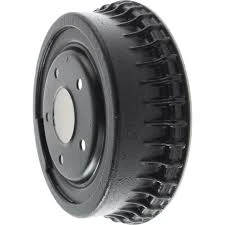
-
 Afrikaans
Afrikaans -
 Albanian
Albanian -
 Amharic
Amharic -
 Arabic
Arabic -
 Armenian
Armenian -
 Azerbaijani
Azerbaijani -
 Basque
Basque -
 Belarusian
Belarusian -
 Bengali
Bengali -
 Bosnian
Bosnian -
 Bulgarian
Bulgarian -
 Catalan
Catalan -
 Cebuano
Cebuano -
 Corsican
Corsican -
 Croatian
Croatian -
 Czech
Czech -
 Danish
Danish -
 Dutch
Dutch -
 IsiNgesi
IsiNgesi -
 Esperanto
Esperanto -
 Estonian
Estonian -
 Finnish
Finnish -
 French
French -
 Frisian
Frisian -
 Galician
Galician -
 Georgian
Georgian -
 German
German -
 Greek
Greek -
 Gujarati
Gujarati -
 Haitian Creole
Haitian Creole -
 hausa
hausa -
 hawaiian
hawaiian -
 Hebrew
Hebrew -
 Hindi
Hindi -
 Miao
Miao -
 Hungarian
Hungarian -
 Icelandic
Icelandic -
 igbo
igbo -
 Indonesian
Indonesian -
 irish
irish -
 Italian
Italian -
 Japanese
Japanese -
 Javanese
Javanese -
 Kannada
Kannada -
 kazakh
kazakh -
 Khmer
Khmer -
 Rwandese
Rwandese -
 Korean
Korean -
 Kurdish
Kurdish -
 Kyrgyz
Kyrgyz -
 Lao
Lao -
 Latin
Latin -
 Latvian
Latvian -
 Lithuanian
Lithuanian -
 Luxembourgish
Luxembourgish -
 Macedonian
Macedonian -
 Malgashi
Malgashi -
 Malay
Malay -
 Malayalam
Malayalam -
 Maltese
Maltese -
 Maori
Maori -
 Marathi
Marathi -
 Mongolian
Mongolian -
 Myanmar
Myanmar -
 Nepali
Nepali -
 Norwegian
Norwegian -
 Norwegian
Norwegian -
 Occitan
Occitan -
 Pashto
Pashto -
 Persian
Persian -
 Polish
Polish -
 Portuguese
Portuguese -
 Punjabi
Punjabi -
 Romanian
Romanian -
 Russian
Russian -
 Samoan
Samoan -
 Scottish Gaelic
Scottish Gaelic -
 Serbian
Serbian -
 Sesotho
Sesotho -
 Shona
Shona -
 Sindhi
Sindhi -
 Sinhala
Sinhala -
 Slovak
Slovak -
 Slovenian
Slovenian -
 Somali
Somali -
 Spanish
Spanish -
 Sundanese
Sundanese -
 Swahili
Swahili -
 Swedish
Swedish -
 Tagalog
Tagalog -
 Tajik
Tajik -
 Tamil
Tamil -
 Tatar
Tatar -
 Telugu
Telugu -
 Thai
Thai -
 Turkish
Turkish -
 Turkmen
Turkmen -
 Ukrainian
Ukrainian -
 Urdu
Urdu -
 Uighur
Uighur -
 Uzbek
Uzbek -
 Vietnamese
Vietnamese -
 Welsh
Welsh -
 Bantu
Bantu -
 Yiddish
Yiddish -
 Yoruba
Yoruba -
 Zulu
Zulu
Jan . 26, 2025 08:53
Buyela kuluhlu
disk brake or drum brake
When deciding between disk brakes and drum brakes for your vehicle, understanding the intricacies of each system is crucial. Both braking systems have evolved over the years, offering distinct advantages and suitable applications depending on the vehicle type and intended use. As a seasoned automotive expert, let me delve into the details that elevate your understanding and aid in an informed decision, ensuring you select the braking system that aligns with your needs.
For heavier vehicles like trucks and buses, the choice between disk and drum brakes becomes even more significant. Disk brakes, with their enhanced stopping power and efficiency, are increasingly used on the front axles of heavy vehicles where braking demands are greater. Yet, the simplicity and reliability of drum brakes make them a viable choice for rear axles, especially when combined with advanced electronic braking systems that enhance their performance. Authoritative industry data suggests that the global market share of disk brakes has been on the rise, driven by the automotive industry's shift towards high-performance and safety-oriented designs. This trend underscores a growing trust in disk brake technology, which is regularly reviewed and improved by automakers and third-party researchers dedicated to vehicular safety and efficiency. In terms of experience, many drivers report a preference for the responsive feel of disk brakes, with their predictable performance providing an added layer of confidence in emergency situations. Regular users of drum brakes often cite their longevity and lower maintenance costs as significant benefits, particularly in vehicles where high braking force is not a primary concern. Ultimately, the choice between disk and drum brakes should be guided by an assessment of driving habits, vehicle specifications, and budget considerations. Both systems, when well-maintained, offer reliable and safe operation. Consulting with a trusted automotive professional can provide further insights tailored to your specific vehicle and driving conditions, ensuring that your choice not only meets but exceeds your performance and safety expectations.


For heavier vehicles like trucks and buses, the choice between disk and drum brakes becomes even more significant. Disk brakes, with their enhanced stopping power and efficiency, are increasingly used on the front axles of heavy vehicles where braking demands are greater. Yet, the simplicity and reliability of drum brakes make them a viable choice for rear axles, especially when combined with advanced electronic braking systems that enhance their performance. Authoritative industry data suggests that the global market share of disk brakes has been on the rise, driven by the automotive industry's shift towards high-performance and safety-oriented designs. This trend underscores a growing trust in disk brake technology, which is regularly reviewed and improved by automakers and third-party researchers dedicated to vehicular safety and efficiency. In terms of experience, many drivers report a preference for the responsive feel of disk brakes, with their predictable performance providing an added layer of confidence in emergency situations. Regular users of drum brakes often cite their longevity and lower maintenance costs as significant benefits, particularly in vehicles where high braking force is not a primary concern. Ultimately, the choice between disk and drum brakes should be guided by an assessment of driving habits, vehicle specifications, and budget considerations. Both systems, when well-maintained, offer reliable and safe operation. Consulting with a trusted automotive professional can provide further insights tailored to your specific vehicle and driving conditions, ensuring that your choice not only meets but exceeds your performance and safety expectations.
Ngaphambili:
Okulandelayo:
Iindaba zamva
-
What Are Drum BrakesIindabaJul.07,2025
-
Understanding Brake Drum MaterialIindabaJul.07,2025
-
Semi-Trailer Brake Drum: A Key Component for Extreme Loads and Long-Distance TransportIindabaJul.07,2025
-
Drum Brake Pads for SaleIindabaJul.07,2025
-
Brake Drums for SaleIindabaJul.07,2025
-
Brake Drum ManufacturerIindabaJul.07,2025
-
Aluminum Brake Drums: The Future of High-Performance CarsIindabaJul.07,2025
